
Dave Mack, the VP of Omni-Channel Retail at SCI, is responsible for the vertical business development. Before joining SCI, he successfully led e-merchandising, sales and operations, and digital marketing functions for The Source, RadioShack and Sears Canada. SCI is a national supply chain partner for clients that include Walmart.ca, ToysRUs.ca, Rogers Wireless, Dollar Tree, DeSerres, and Sears.
Everything you wanted to know about automated fulfillment – even if you weren’t afraid to ask
Building a successful business in the omni-channel e-commerce arena takes guts, imagination, and a relentless drive to balance quality, expenses, and revenue. Identifying and acting on potential saving opportunities is key.
Changes to fulfillment – a big chunk of every online retailer’s costs – can result in major savings. Especially as these costs only continue to increase as your volume of orders grows.
Most Canadian fulfillment operations are still conventional rack or shelf, with manual picking and packing. While relatively easy to set up, this method does need significant warehouse space and labour resources. As volumes grow, conventional operations become increasingly difficult and the potential return on investment (ROI) of automating your fulfillment grows.
Here’s a quick tour that outlines types of automated fulfillment, why you’re hearing so much about it lately, and whether it makes sense for your e-commerce business.
What is automated fulfillment?
Opportunity to automate any of the tasks involved in fulfillment, such as receiving, putting away, storage, retrieval, picking, packing, labelling and shipping to be performed by mechanized equipment like conveyor belts, pick towers, sorters, and robots.
I’ve heard so much about automated fulfillment lately – why?
Emerging trends that act as catalysts to increase the adoption of automated fulfillment include:
- Growing warehouse labour shortages and rising labour rates make the cost of investing in automation more attractive.
- Decreasing costs for automation and related mechanized equipment as adoption grows.
- Increased competition and a push for profitability that requires the lowest possible cost for fulfilling customers’ orders.
- The rise in demand for same-day and rapid fulfillment, requiring faster picking processes.
- Higher e-commerce volumes make it easier to justify automated fulfillment.
- Multi-client Third Party Logistics (3PL) operations that can consolidate volumes across different clients, supporting increased automation.
What are the benefits of automation?
Depending on the fulfillment tasks that are automated and the equipment used to do so, potential benefits include:
- Improved use of space, reducing the need for adding costly new square footage.
- Reduced unit processing costs.
- Lower labour requirements.
- Increased order processing capacity.
- Improved fulfillment service levels.
- Higher order accuracy and fewer errors.
When does an investment in automation make sense?
There are a number of factors which need to be in place to support the effective introduction of automation. The most important are:
- High order volumes – 5,000 or more individual orders on a daily basis.
- Products of similar size/shape/weight that can go into similar sized packaging – many systems are optimized for the minimal number of box sizes.
- High labour costs today (which often goes hand-in-hand with labour shortages).
What are some examples of automation?
- Automated box erector and taper unit – Converts and opens flat boxes and applies tape without human intervention. The carton is carried to the pick area by an overhead delivery belt. This saves human order pickers work effort and walking time.
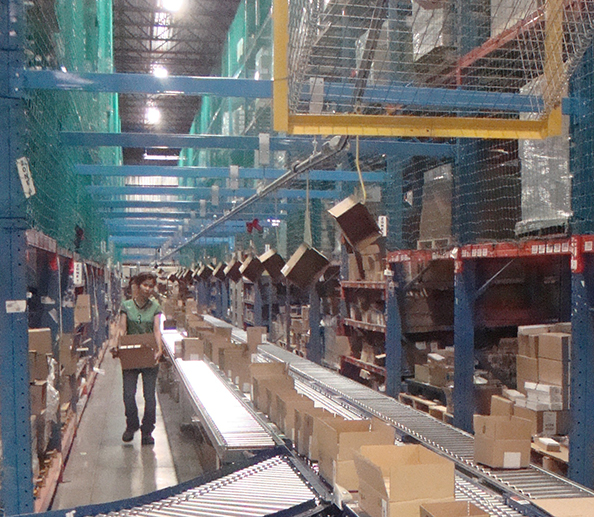
- Zone picking to belt, supported by SAP WM and portable RF (radio frequency) terminals – Conveyor belt running down the middle of a pick area allows human order-pickers to use wireless RF guns to accurately pick orders to cartons and place them on a conveyor belt, eliminating walking time.
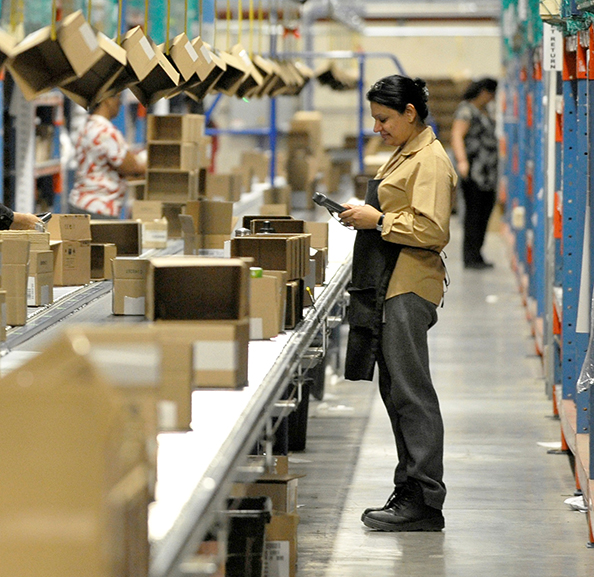
- In-Line Scale on conveyor verifying total order weight for order quantity verification – Improves order accuracy by verifying that each order’s total weight matches the system’s calculation. If the weight doesn’t match, the order is diverted and checked by a human, which reduces wrong orders and improves customers’ experience.
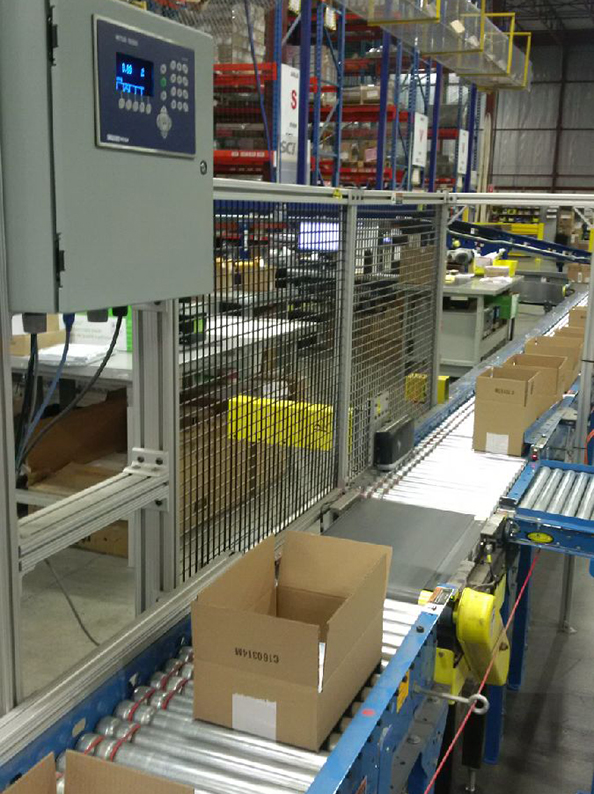
- Automated box insertion of manuals /automated print, fold and insertion of order packing slips into boxes – This is done with zero human intervention in the pack station area as orders move along a conveyor belt.
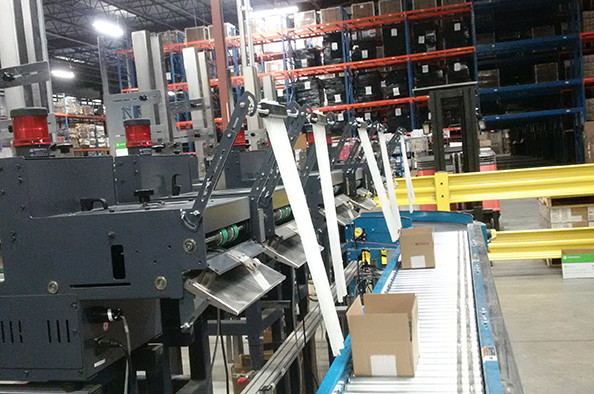
- Automated taping of completed shipping cartons/Overhead print and application of shipping label – All cartons are fed by an operator into a taping unit. Here, tape is applied automatically, reducing both labour requirements and the time needed to get boxes ready to receive orders. Then the system automatically prints the shipping label and a robot arm applies it to the carton before the conveyor carries it to automated sortation.
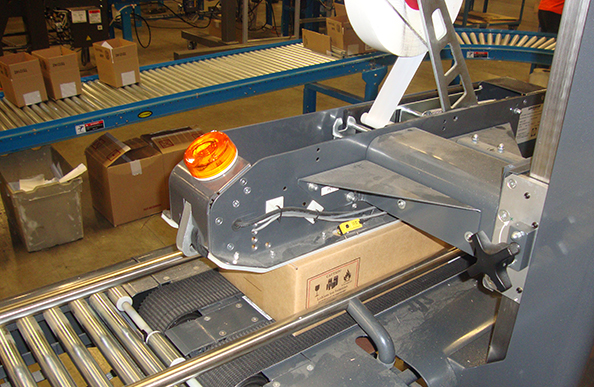
- Automated carton sortation to shipping lanes facilitating zone skipping – All barcoded cartons are automatically sorted to the appropriate shipping lane, eliminating much manual labour. It also reduces the human errors which lead to cartons being shipped to the wrong destination – and then needing to be expensively shipped to the correct destination.
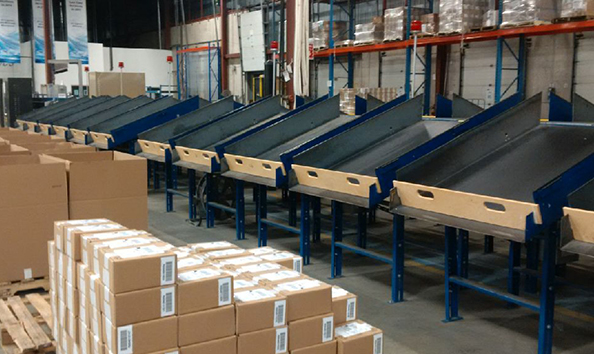
Another bonus to automated fulfillment, one that pays off over the longer term, is that improved order accuracy and shorter fulfillment times will help to build customer loyalty – and more of the positive reviews that are so valuable in the e-commerce space.